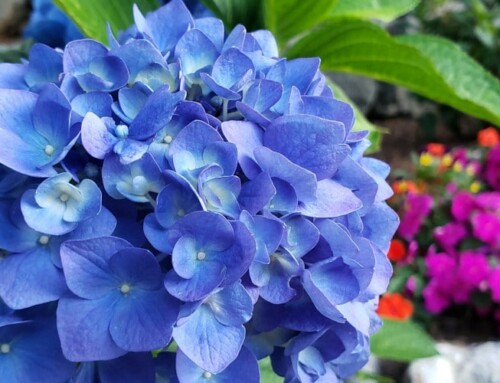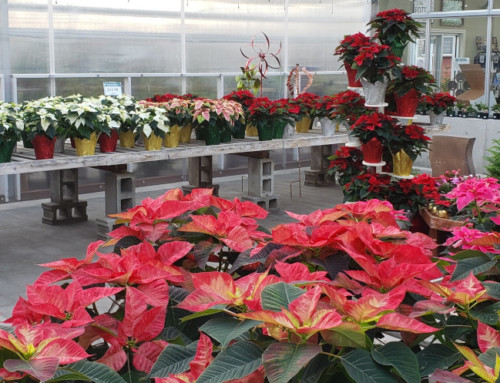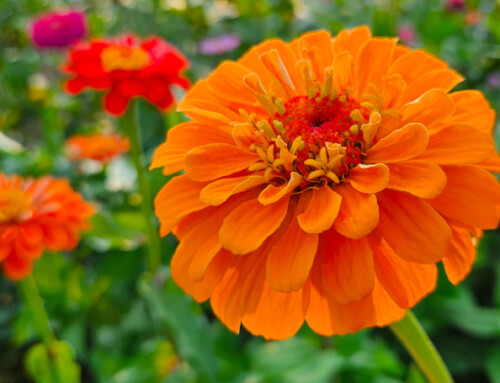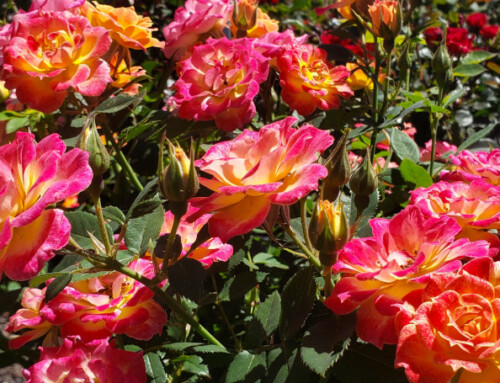As I look out the window of my living room this evening, I can admire a beautiful specimen ‘Sango Kaku’–commonly called “coral bark”–Japanese maple. In the last month, it’s been great to watch it awake from dormancy and leaf out. Normally, I probably wouldn’t care so much; after all, I don’t pay a lot of attention to most trees this time of year as I’m more interested in watching spring bulbs and annuals come into color.
This particular tree, however, is a rescue tree–a year ago, it was near death. Let me explain. A very well-intentioned customer bought it at Vander Giessen’s and, as soon as he got home, planted it. Sounds good so far. But as it leafed out, it quickly showed signs of major sickness: all the leaves started turning brown and curling up, and worse yet, the normally red-hued branches began turning black.
Worried that he had purchased a diseased tree, the customer called me to come take a look at it. After inspecting the tree, I discovered that, in planting it, he had buried it almost two inches deeper than the depth of the original rootball. Where the bark of the tree had once been exposed to open air, it now was surrounded in neatly-packed soil.
Unfortunately, this problem is all too common in planting shrubs and trees. While you may have every intention of doing right by your plants–after all, you’ve spent real money on them!–you can love them to death before you’ve even had the chance to get to know each other when you plant them too deep. In the case of this customer’s tree, Japanese maples have very thin bark, and piling dirt too high around them can suffocate the tree as the soil cuts off supply of water and nutrients to the branches. And Japanese maples aren’t alone.
With the exception of a very few plants, most anything will suffer if you plant it too deep. My grandma has a saying I wrote about a year ago and would like to remind you of: “Plant it too high, it will not die; plant it too low, it will not grow.” Really, it’s better to plant the new additions to your yard too high and gently slope the ground away from the base of whatever you’ve planted than to sink it in a hole–you’re very rarely going to kill a plant doing so.
So, other than a cutesy saying, what’s the moral of this story? Well, it’s two-fold. First, take care to plant properly. It’s not rocket science, but planting can easily go awry if you don’t have the proper knowledge to keep your plants above grade. When you’re buying plants, ask about the best way to plant them.
Second, don’t underestimate the resiliency of plants! My Japanese maple is a testament to that, and it’s not like I’m a miracle worker–I just had some patience. After digging up the nearly-dead tree, I carefully washed the bark, pruned out the dead branches, re-potted the tree in well-drained soil and doused it with Vitamin B1 to stimulate new root growth that I hoped would help to bring life back to the tree. A year of care later, I have an absolutely beautiful, healthy tree in my front yard.
If you’ve ever come home to a recently-planted barberry wilted and dropping leaves because you forgot to water it during a warm summer day, or if you’ve ever turned your back on a hanging basket just long enough for it to go entirely limp–don’t give up. With a little care and patience, you can usually bring it back to life (and quickly, too!).
As you get started with planting in your yard this spring, take care to plant properly–err on the side of planting too high if anything–and don’t give up if you get it wrong at first. Plants are very forgiving, so if you goof up, you can usually correct your mistakes easily enough. Now go do some planting–and have fun!







Leave A Comment